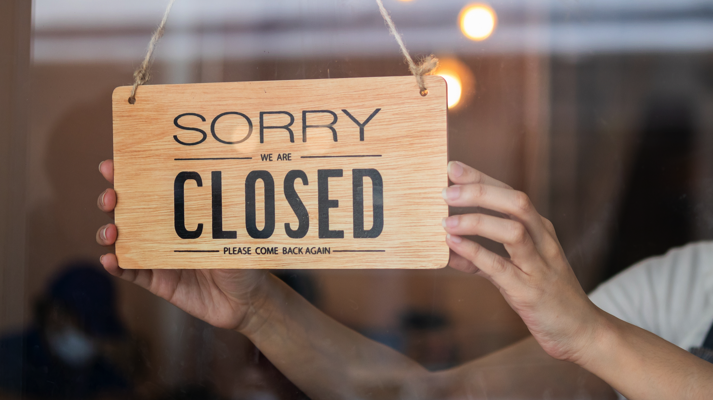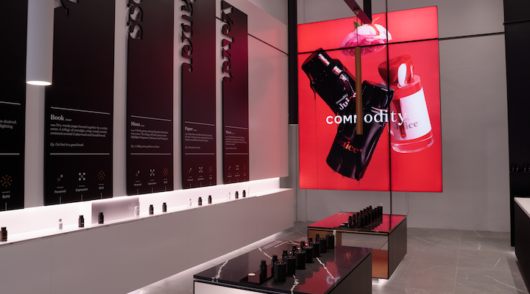Australia is currently in the midst of a “retail recession” with real retail turnover experiencing a decline over two consecutive quarters.
According to Australian Bureau of Statistics data, spending fell by 0.6 per cent during the three months to March, and by 0.3 per cent in the previous December quarter. With high inflation and climbing interest rates, consumer sentiment is set to plunge further, with retail spending set to decline in the June quarter.
But what are the implications of a retail recession, and just how damaging will it be for retailers and consumers?
According to the Australian Retailers Association (ARA) CEO Paul Zahra, sales reports and anecdotal retail feedback indicate that discretionary spending is in decline. He said that rising cost-of-living pressures and consecutive rate rises have also created a “definitive slowdown” for shoppers.
In particular, he said that discretionary purchases and household goods were usually the first to go, with shoppers hesitant to spend in this macroeconomic environment.
“There isn’t a silver bullet fix to restoring consumer confidence other than cost-of-living relief. Many economists suggest inflation has, or is close to, its peak. When inflation begins to drop and interest rates return to decline – we will likely see a resurgence in discretionary spending habits,” Zahra said.
Zahra added that the hospitality industry is “still healthy”, though it is expected to decline in the coming months. However, most discretionary categories have dropped significantly compared to 2022.
“Household goods [have seen] the most significant [fall] with five months of negative sales growth year-on-year,” he said.
Consumers are hurting
Bernie Brookes, executive chair and owner of Colette by Colette Hayman, is in no doubt that the retail industry has entered a very difficult stage. He said that the industry was faring relatively poorly after Christmas, and has deteriorated further between April to June. He added that consumers are not out spending, reflecting the low level of consumer confidence.
“My view is that we’ll be in this dilemma until some time next year, largely because of the continued impact of interest rate rises, added to the significant increases in electricity, gas and so on. The consumer is certainly hurting,” he said.
He believes that there are similarities between the current situation and the Global Financial Crisis (GFC) in 2008, with the rate of inflation more significant now. This, he said, is covering up volume decreases for retailers.
“Many retailers aren’t keeping up with the inflation rate and seeing negative growth. [Success] will be very much about stealing market share from competitors,” Brookes said.
Brookes observed that retailers are starting to cut inventory levels – or their “open to buy” – while also forecasting sales depending on a retailer’s lead time. He said that most retailers are reducing forward buys by at least 10 per cent to compensate for deteriorating demand.
“We will see some fairly aggressive [discounting] both by pureplay operators, and bricks-and-mortar retailers as they clear inventory,” he said.
During times of distress, Brookes observed that successful retailers invest in value, capital and expansion. Following the GFC, he noted that the retailers who did this were able to exit the recession quicker compared to competitors, and come out stronger on the other side.
Regarding his own businesses, Brookes is reducing profitability expectations over the next 12 months, and focusing on investments in acquisitions and new stores, as well as pricing and marketing strategies.
“It’s fair to say that no one will escape this dilemma,” he said. “We’re particularly seeing it in areas such as electronics and homewares, and are starting to see it in apparel and accessories.”
“As the consumer tightens their belt further, [we’ll] see a significant period of distress in retail over the next six to 12 months. Christmas will more than likely be disappointing for most retailers, and Black Friday [discounts] will be quite aggressive in the endeavour to clear excess stock.”
Young people feeling it
Meanwhile, business strategist and founder of The Design Thinkers, Nicola Mansfield told Inside Retail that the current situation isn’t a traditional recession. While revenue is being held up to some extent by inflationary prices, consumption is continuing to fall with people spending less.
While the economy – which is partly being propped up by the mining sector – is not yet in a recession, she noted that people are hurting. “We’ve been told that we’re not in a recession, but it feels like we are,” she said.
“On top of that we’ve got disparate industries with some booming, while others downturned. Younger people are also feeling it as are people with mortgages, so the impact is really patchy which makes it hard for retailers,” Mansfield said.”
She added that retailers need to have a strong understanding of their customer base – reinforced by data, insights and knowledge – so they can adapt and pivot as required, and sustain growth during this recession.
Marketing offensive
According to a report commissioned by The Design Thinkers, 10 per cent of businesses exceed their typical performance during a recession.
Among other recommendations, the report suggested that retailers seek to cut costs, reduce debt and – at the first sign of economic recovery – shift to a merger and acquisition strategy in order to obtain market share. The report also recommended that brands strategically invest in customer relationships and brand marketing.
According to Mansfield, it’s imperative that retailers go on a marketing offensive, seek to increase their footprint and enter new markets where possible.
For instance, Zara opened a number of stores across North America, Beijing and Tokyo during the GFC, while Starbucks closed underperforming stores in the US, but expanded across China. According to Mansfield, these strategies were effective in helping retailers navigate recessionary conditions.
And while some retailers made staff redundant across their store networks and head offices, Mansfield observed that brands that did well during the GFC offered additional training, recruited staff let go by other brands, and doubled down on their customer service and customer experience offerings.
“Resilient brands emphasised their range, and considered their positioning, pricing and merchandising in order to safeguard sales, while also increasing their customer base,” Mansfield said.
She added that retailers should look into their sustainability offering, with consumers stating a willingness to pay more for ethical and sustainable products.
However, it’s more important than ever that claims are reinforced with evidence, with customer retention being critical in this economic environment. It comes as 72 per cent of consumers believe that brands are greenwashing, and the ACCC cracking down on dubious claims.
“We need to become much better at communicating what we’re talking about,” she said.
Most challenging years
Zahra also noted that this is a unique and unprecedented time for the industry, which is facing a “cost of doing business crisis.”
“With rising rent, utilities, labour, supply chain costs and materials – we’re looking at one of the most challenging years for business in recent memory,” he said.
“If rising costs and sales declines persist, businesses will ultimately be faced with the tough decision of whether to reduce or lay off staff. [The] confronting reality is that many businesses do not survive.”
However, he pointed out that a recessionary environment can lead to resilience and innovation, which can help to drive consumer behaviour.
“While retailers have been impacted by recessions in the past, most of the industry has shown an extraordinary ability to reinvent itself in the face of adversity,” Zahra said.
“Crisis drives innovation and retailers should strive to continue to innovate and evolve beyond a recession to stay ahead of the competition and appeal to the modern consumer.”
Zahra suggested that retailers focus on value, emphasise promotions and discounts where possible, and expand their loyalty and reward programs. He also pointed to ARA-Roy Morgan data, which showed that the 50- to 64-year-old demographic is set to be the biggest shoppers over peak period.
“This is an example of a seasonal spending period that many retailers can take advantage of.”
Worse before it gets better
During this period, Zahra said that retailers should be mindful of their stock levels and offer discounts to clear space if overstocked. While it is difficult to make predictions regarding retail spending over the coming months, he expects to see a further softening of retail spending.
“Cost-of-living pressures typically have a lag effect on retail, and we are now witnessing the impact of months of continued interest rate rises and price rises on consumer spending,” he said.
“While inflation remains high and interest rates continue to climb, we expect retail sales will continue to soften with many analysts not predicting sales growth until 2025.”
Meanwhile, with interest rates likely to rise further, Mansfield believes that the average household will be hit particularly hard.
“My humble opinion is that rate rises are a very blunt instrument that the RBA is using to try to manage inflation. Unfortunately, I think we’re at the beginning [of this recession],” she said.
“It’s likely going to get worse before it gets better, so the callout to retailers is to get the work done in advance.
“Don’t be delayed in [your] response.”







